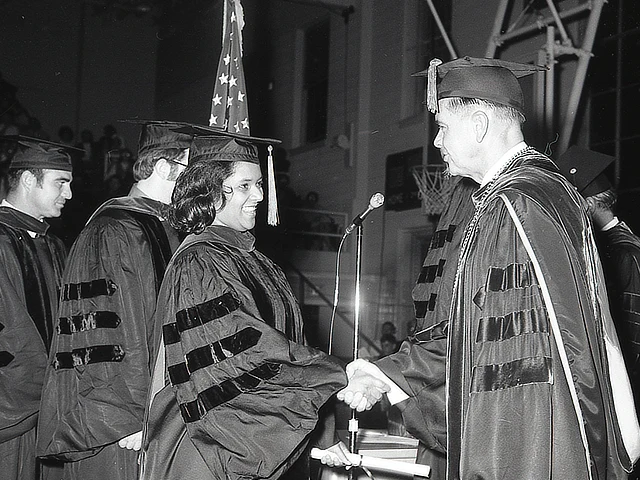
Black Alabamians have shaped the state's history since its founding in 1819. Samford University, established as Howard College in 1841, witnessed this history unfold, from enslaved labor on campus to the integration of Black students in the 1960s and the dedication of the Racial Reconciliation Memorial in 2022.
Samford's Special Collection and University Archives at Harwell Goodwin Davis Library documents Alabama's history, preserving rare and significant materials that tell the stories of its people and religious institutions.
“Preserving these records and artifacts is vital to understanding our past, shaping our present and guiding our future,” said Jennifer Taylor, chair of Special Collection and University Archives. “Our collections include records and artifacts that highlight the contributions of Black men and women at Samford and across Alabama.”
Among these artifacts is an original copy of Rev. Martin Luther King Jr.'s “Letter from Birmingham Jail,” dated April 16, 1963. The letter remains one of the most influential texts of the civil rights movement.
SUPPORT: Donate to preservation efforts of the Special Collection and University Archives
The stories of Black trailblazers at Samford are reflected in campus monuments. A plaque on Centennial Walk honors Harry, an enslaved man who saved students' lives in an 1854 fire but died from his injuries. His heroism is also commemorated through Harry’s Coffeehouse and a monument in Marion, Alabama, where he was buried.
In 1969, Elizabeth Sloan Ragland became the first Black student to integrate campus housing. Today, the Ragland Scholars program supports a multicultural honors experience, fostering academic excellence and leadership in her honor. That same year, Samford became Alabama’s first major university to integrate its athletic teams when Billy Williams, Sherman Hogan and Otha Mitchell joined the men’s basketball team.
In 2020, the university installed its Racial Reconciliation Memorial. In 2022, it was officially dedicated during a public worship service on campus. The memorial specifically honors the memory of Harry (1831-1854) and of Audrey Lattimore Gaston (1940-1989) who in 1967 became the first Black student admitted to Samford, and later went on to become the first Black female in the Southeast appointed to the U.S. Attorney’s Office. Later this year, Samford will honor her legacy by opening a first-year residence hall in her memory, Audrey Lattimore Gaston Hall.
The Special Collection and University Archives continues to expand, providing access to materials that document these legacies. Students and employees may visit Monday-Friday, 9 a.m.-5 p.m. Guests can schedule an appointment to explore the collections, many of which are available online.
“We aim to preserve and share materials that help researchers and the Samford community better understand Alabama’s history,” Taylor said.
Celebrate Black History Month by attending Samford’s events and exploring these stories and artifacts in the University Library or online in the digital collection.
